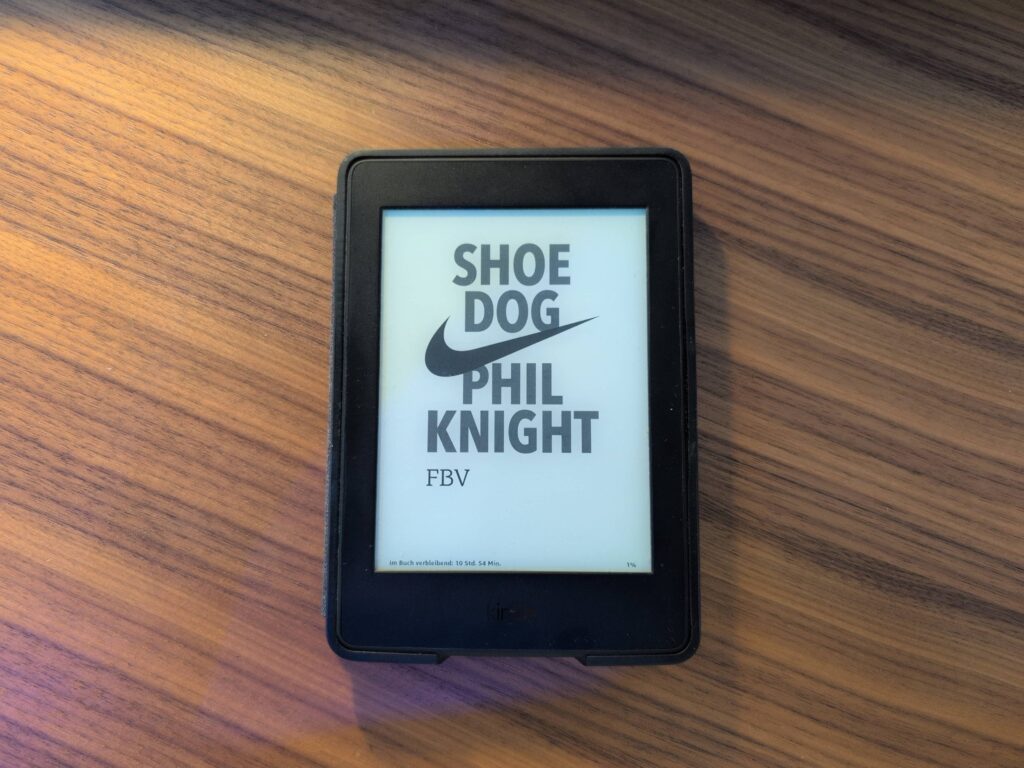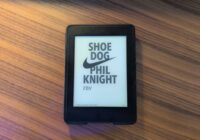Last year, I had the incredible opportunity to be responsible for the application process for my employer, Roche, to compete for the prestigious Digital Lighthouse Award by the World Economic Forum. After a journey that spanned over a year, we received the news we had been hoping for: we won!
This project was an immensely rewarding experience, filled with lessons on so many levels—strategic, technical, and personal. I found it so impactful that I decided to share my insights here. This will be my first English post on my blog, and there’s a simple reason for that: I’m diving into a highly international topic, and I want to reach as broad an audience as possible.
DISCLAIMER: Before we dive in, I want to clarify that, due to data privacy and intellectual property considerations, I won’t be sharing any internal details. Instead, I’ll focus on personal experiences and publicly available information.
Introduction: A Dream Turned Reality – How We Became a Digital Lighthouse
Becoming a Digital Lighthouse recognized by the World Economic Forum is more than just an award—it’s a testament to innovation, leadership, and the transformative power of technology. The Global Lighthouse Network, an initiative by the Forum, identifies companies that are leading the way in the Fourth Industrial Revolution (4IR). These organizations are not just adopting cutting-edge technologies like AI, IoT, and automation; they are redefining industry standards, driving sustainability, and creating measurable impact on a global scale.
This brings me to a critical point: the concept of „measurable impact.“ When submitting use cases for consideration, it’s not enough to simply showcase fancy technology or run small-scale Proof of Concepts. The World Economic Forum demands quantifiable proof that your innovation delivers real, tangible value. But it doesn’t stop there. The impact must also be proportionate to the scale of your operations. Let me break it down: if you save the equivalent of one Full-Time Employee (FTE) through a 4IR technology, but your site employs over 1,000 FTEs, the impact is negligible—it simply doesn’t move the needle. Similarly, if your site produces goods worth €300 million and your digital use case reduces production waste by €100,000, the relative impact is too small to be meaningful. The bar is set high for a reason. It’s not just about adopting cutting-edge tech; it’s about driving transformative change that aligns with the scale and output of your operations. This is what separates true Digital Lighthouses from the rest—they don’t just innovate; they deliver impact that matters.
This approach makes it necessary to focus on the digital use cases that have the greatest impact when selecting them. Downstream, however, this approach also opens the door to internal discussions whether this or that PoC makes sense at all, because its subsequent impact will not be measurable at all or hardly measurable at all. The phrase “death by proof of concept” thus takes on a new meaning.
For us, earning this recognition was a milestone that validated years of hard work, strategic vision, and a relentless commitment to innovation and measurable impact at scale. It’s a symbol of how we’ve embraced digital transformation to not only future-proof our business but also inspire others in our industry to follow suit.
The Vision: Why we aimed for Digital Lighthouse Status
When we first considered applying for the World Economic Forum’s Digital Lighthouse Award, it felt like a moonshot. But behind that bold ambition was a very grounded reason: we wanted to benchmark ourselves against the world’s best, not just for the recognition, but to ensure we were truly pushing the envelope in digital transformation. It wasn’t just about tech—it was about impact, scale, and sustainability. Lighthouse status offered us a clear north star: to be a beacon not just of innovation, but of meaningful change in our industry.
We had several compelling reasons for applying to become a Lighthouse. First and foremost, we were proud of the outstanding work our colleagues had done to drive innovation in our production processes, and we wanted to showcase those achievements. At the same time, we believed our strategic initiatives set a strong example worth sharing.
Another key motivation was the opportunity to make history — Switzerland had never had a Digital Lighthouse before, and we were determined to be the first.
Earning Lighthouse status also opens the door to a global network of like-minded pioneers. We saw this as a valuable chance to connect, collaborate, and learn from other leading organizations around the world.
The Strategy: Laying the Groundwork — Our Blueprint for Digital Transformation
We didn’t wake up one day with a digital factory. Achieving this took years of groundwork. Our strategy was built on three pillars — which are very common in the field of digital transformation:
- Business
- Technology
- People
We started by investing in digital literacy across all levels, building agile cross-functional teams, and putting strong governance in place to drive scale—not just pilot projects. A big learning: Don’t let perfection delay progress. We learned to move fast, experiment smart, and standardize only what works. When we started, there were more than 700 digital POCs worldwide. A core part of our strategy was therefore to reduce these, focus on just a few and then quickly scale them globally to all locations.
The Journey: Navigating Challenges and Celebrating Milestones
The whole application process takes many months. Once you have made it, the process is not over! I was surprised by how much communication work is required afterward.

Please note: You should always pay attention to the application deadlines on the website. Once the application is open, you usually don’t have long to fill out the form. Speaking of forms: As of 2024, this was a simple online form — similar to one familiar from surveys. But you couldn’t cache it! That’s why I created a gSheet, which I’m linking here.
The reason is simple: it asks for so much data and information that you will almost certainly need to involve a few colleagues. So I first collected all the data and checked it internally before simply copying everything into the form. The online form is required for the 1st application phase. Once you have completed this, you will receive a presentation template for the 2nd application phase, which will then go into more detail. Here, for the first time, you will also be asked to provide detailed sustainability figures. The reason is simple: every Lighthouse should not only be characterized by the use of technology, but should of course also think about the environment.
The application information will now also be expanded. A comprehensive picture must be drawn of how the digital challenges are being tackled. Information on the following categories must be presented:
- Digital Strategy
- People Enabler
- Cybersecurity
- Tech Stack
- Sustainability
- …and of course the five use cases with the greatest business impact
The Innovations: What Set Us Apart — The Technologies That Propelled Us Forward
When we asked ourselves what truly differentiated us from other contenders, one answer stood out: our ability to transform complexity into foresight. In large molecule bio manufacturing, predicting cell growth has traditionally been one of the industry’s most stubborn challenges—highly variable, highly sensitive, and deeply complex.
But we leaned into that challenge. By harnessing vast volumes of process data and developing our own AI models in-house, we achieved something remarkable: we were able to predict cell growth with a level of accuracy that gave us a real operational edge. This wasn’t about off-the-shelf solutions—it was about deep domain knowledge, data craftsmanship, and bold innovation tailored to our unique processes.
This predictive capability didn’t just improve performance—it became a strategic differentiator. In a field where many rely on reactive control, we proved that proactive insight is not only possible, but game-changing. If there’s one lesson here, it’s this: don’t just adopt technology—use it to solve your hardest problem. That’s what truly sets you apart.
The impact: Transforming Numbers into Narratives
Of course, we had our KPIs—improved yield, reduced downtime, better forecast accuracy—but what truly resonated with our teams and stakeholders were the stories behind those numbers. Like how an operator used a new dashboard to prevent a major line stoppage. Or how a digital twin helped us redesign a process that cut emissions. These stories turned abstract metrics into proof of progress. If you’re going after transformation, make space for both data and storytelling.
At the same time, this was also one of the biggest lessons learned for me: although we were good at setting up and testing new digital POcs, we found it difficult to translate them into measurable quantitative impact. Incidentally, this is something that many people find difficult!
The Recognition: The Pinnacle of Achievement
Winning the Digital Lighthouse Award was more than a trophy—it was validation. Validation that our people, our vision, and our commitment to transformation were on the right path. But it’s also a responsibility. Lighthouses are meant to guide others, not stand alone. That’s why we’re committed to sharing our learnings openly. If this inspires just one other team to begin their transformation journey, then the award will have already done its job.
When we found out that we had won, I was most touched by how happy all my colleagues were. Their work was recognized and appreciated internationally. Of course, it’s nice to receive the award afterward, but the biggest win lies in the motivation and enthusiasm of the many colleagues who contributed to it and whose daily work is the reason for the award.
There were a few people who saw the whole application in artificial terms. Nevertheless, such an award can and is confirmation for so many and this should not be underestimated.
Conclusion
Winning the Digital Lighthouse Award was not the end of a journey—it was the beginning of a new chapter. It proved what’s possible when vision, courage, and innovation come together with relentless execution. But more importantly, it reminded us that transformation isn’t a project with a finish line. It’s a mindset, a movement, a daily commitment to doing things better than we did yesterday.
Along the way, we’ve learned that true innovation isn’t just about adopting technology—it’s about changing how we think, how we work, and how we lead. It’s about having the bravery to question the status quo and the humility to learn from every failure. And most of all, it’s about people—empowering them with the tools, trust, and purpose to shape the future.
Additional Information
At the end of the year, the results of the Lighthouses are summarized in a white paper, which I am linking here.
There is also an interactive map where you can see all the existing Lighthouses.







